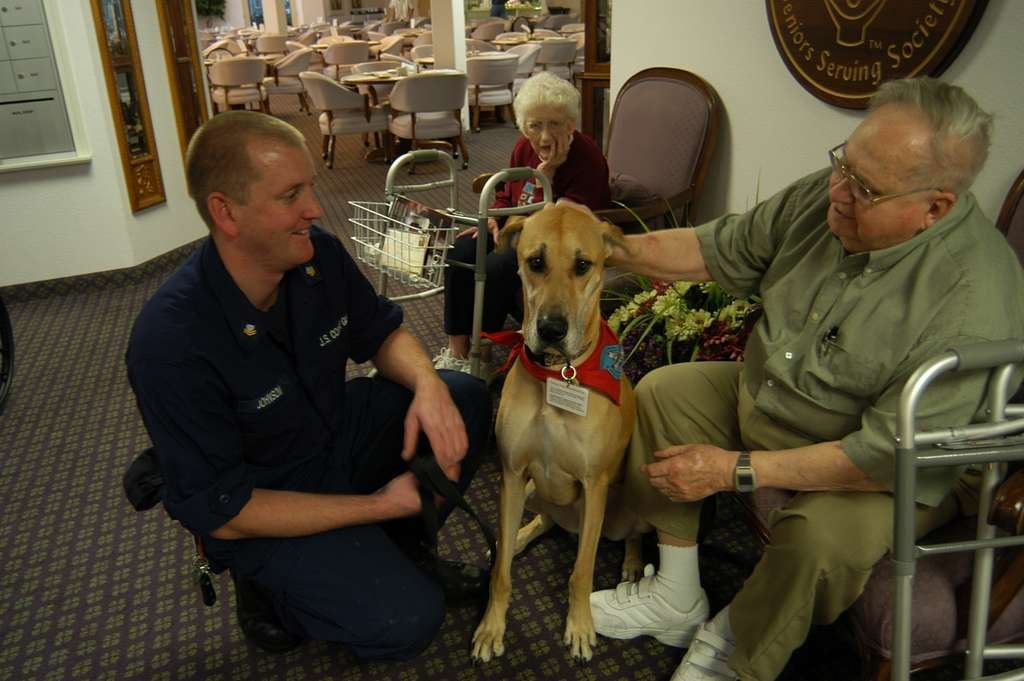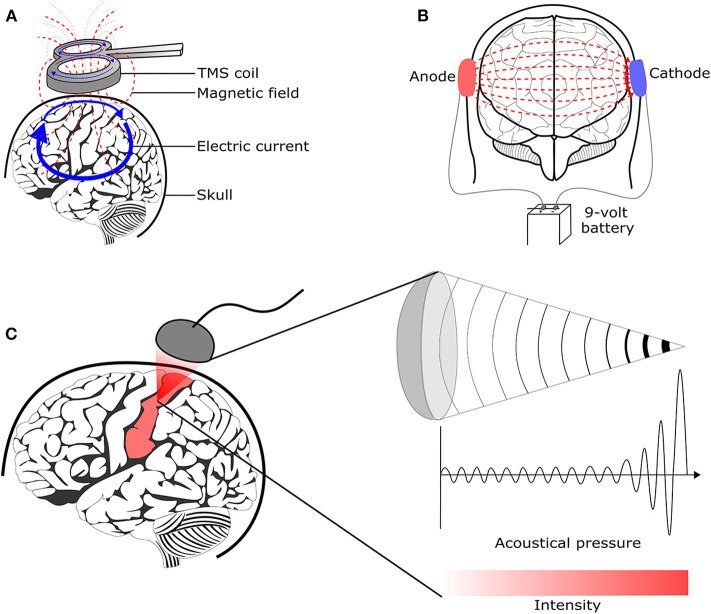Determined paws tread across the hospital floor, leaving behind a trail of wagging tails and hopeful eyes. In the realm of therapy dog training, these furry healers possess an exceptional ability to soothe and uplift those in need. But what lies beneath their enchanting nature and gentle demeanor? Amidst the endless belly rubs and ear scratches, there exists a key ingredient that fuels their extraordinary capabilities: mental stimulation. As the backbone of their training, this often-overlooked aspect delves far deeper than the average canine obedience class. From puzzle-solving to scent tracking, the role of mental stimulation in therapy dog training is a fascinating tapestry woven meticulously by trainers and their four-legged companions alike. In this article, we will unravel the intricacies of this crucial element, exploring how it bolsters a dog’s therapeutic potential and how it shapes the profound connections they forge with humans in need. So prepare to delve into the captivating world of therapy dog training, where the melding of minds breathes life into miracles.
Table of Contents
- The Power of Mental Stimulation in Therapy Dog Training
- Unleashing the Potential: Exploring the Link between Mental Stimulation and a Successful Therapy Dog
- Crafting Engaging Exercises: Enhancing Mental Stimulation in Therapy Dog Training
- Unveiling the Benefits: How Mental Stimulation Can Transform Therapy Dog Training
- The Art of Balancing: Designing an Effective Therapy Dog Training Regimen
- Q&A
- Future Outlook

The Power of Mental Stimulation in Therapy Dog Training
Dog therapy is much more than just a furry companion providing comfort and support. It is a holistic approach that involves mental stimulation, benefiting both the dog and the individual they are helping. By incorporating mental exercises into therapy dog training, we tap into the incredible potential our furry friends possess.
A mentally stimulated therapy dog is more alert, focused, and engaged, creating a deeper connection with those they assist. It enhances their problem-solving abilities, boosts their confidence, and enables them to adapt to different situations with ease. Through mental exercises, we challenge their mind, promoting cognitive development and preventing boredom.
- Puzzle Toys: Incorporate puzzle toys into your therapy dog’s routine to encourage problem-solving skills. These toys provide mental stimulation and keep their minds active during downtime.
- Scent Training: Engage your therapy dog in scent training activities to heighten their sensory abilities. This can include finding specific scents, locating hidden treats, or participating in scent-based games.
- Basic Obedience Training: Teaching your therapy dog basic obedience commands such as sit, stay, and heel not only ensures their safety but also stimulates their mind. It improves their focus and establishes a strong bond between you and your furry companion.
Utilizing mental stimulation in therapy dog training enriches both the lives of the individuals they assist and the dogs themselves. It allows our furry helpers to thrive, fostering their natural intelligence and empathy. So, let’s embrace the power of mental stimulation and unlock the full potential of our therapy dogs.

Unleashing the Potential: Exploring the Link between Mental Stimulation and a Successful Therapy Dog
Therapy dogs have long been hailed as sources of support and comfort, providing much-needed solace to individuals in various settings. However, a fundamental aspect often overlooked is the vital role that mental stimulation plays in shaping a successful therapy dog. By delving into the depths of this connection, we uncover a wealth of possibilities that can amplify the impact these extraordinary canines have on those they serve.
1. Enriched Training: One cannot overstate the importance of mental stimulation in training therapy dogs. By exposing them to diversified environments, novel scents, and different social interactions, we broaden their horizons and equip them with adaptability. This enrichment paves the way for their ability to remain calm and composed in unpredictable situations, a prerequisite for any successful therapy dog.
2. Enhanced Empathy: Similar to humans, dogs possess incredible cognitive abilities that can be honed through mental stimulation. By engaging these intelligent creatures in intellectually challenging activities, we nurture their capacity for empathy. A therapy dog that can understand human emotions is better equipped to provide the appropriate support, whether it involves comforting someone in distress or simply being a joyful presence in times of need.
3. Strengthened Resilience: Regular mental stimulation stimulates a therapy dog’s problem-solving skills, equipping them with the tools to navigate unexpected situations. By exposing them to puzzles, obedience exercises, and scent detection tasks, we foster their resilience and adaptability. In turn, this allows them to remain focused in the face of distractions and endure physically and mentally demanding therapy sessions, ultimately enhancing their effectiveness as healing companions.
Unleashing the full potential of therapy dogs requires recognizing the strong link between mental stimulation and their success. By providing an environment that challenges and engages their minds, we empower them to serve as even more valuable assets in the realms of therapy and support. Embracing mental stimulation as an essential element fosters the growth of therapy dogs, enabling them to positively impact lives in ways we never thought possible.

Crafting Engaging Exercises: Enhancing Mental Stimulation in Therapy Dog Training
In therapy dog training, it is essential to provide mental stimulation to enhance the overall well-being and capabilities of therapy dogs. Engaging exercises play a crucial role in achieving this goal, as they not only keep the dogs physically active but also challenge their cognitive abilities. By incorporating a variety of exercises into their training routine, therapy dogs can develop problem-solving skills, improve focus, and adaptability.
1. Puzzle Toys:
Puzzle toys are a fantastic way to engage therapy dogs mentally. These toys provide a challenge that encourages dogs to use their problem-solving skills and tap into their natural instincts. Consider providing puzzle toys that require dogs to figure out how to obtain a treat, solve a puzzle, or manipulate objects to earn a reward. Not only will this keep their minds active, but it will also help them develop patience and perseverance.
2. Scent Work:
Scent work exercises can be incredibly engaging for therapy dogs. Their acute sense of smell allows them to excel in activities like finding hidden objects or tracking scents. Create scent stations or hide small treats in various areas, encouraging your dog to use their nose to locate them. This type of exercise not only stimulates their minds but also taps into their natural instincts, providing a fulfilling and challenging experience.
3. Problem-Solving Games:
Introducing problem-solving games during therapy dog training sessions can provide mental stimulation while fostering a sense of accomplishment. Games like “find the treat” or “hide and seek” help dogs develop critical thinking skills as they are challenged to use their senses and intelligence to locate hidden objects or treats. These games also promote bonding between the dog and the handler, creating a positive and engaging training environment.
By incorporating these engaging exercises into therapy dog training, handlers can enhance the mental stimulation that their dogs receive. It is essential to keep the exercises varied and interesting to prevent boredom and maintain the dog’s enthusiasm for training sessions. Remember, a mentally stimulated therapy dog is better equipped to provide comfort, support, and joy to those they serve.

Unveiling the Benefits: How Mental Stimulation Can Transform Therapy Dog Training
When it comes to therapy dog training, mental stimulation plays a crucial role in transforming these furry companions into true healers. The benefits of providing stimulating activities for therapy dogs cannot be understated. Not only does it enhance their overall well-being, but it also helps them excel in their important role of providing comfort and support to those in need.
One of the significant advantages of mental stimulation in therapy dog training is its ability to improve cognitive function. Engaging dogs in interactive games and puzzles fosters problem-solving skills, stimulates their curiosity, and keeps their minds sharp. This helps them develop a better understanding of their surroundings, allowing them to better assess a person’s emotional needs. By honing their mental agility, therapy dogs can provide more effective and personalized support to the individuals they are assisting.
In addition to cognitive benefits, mental stimulation also aids in managing stress and anxiety for both the therapy dogs and the people they serve. Through engaging activities such as scent detection games or hide-and-seek challenges, these dogs learn to focus their attention, channel their energy, and reduce any potential restlessness. It promotes a sense of calmness and relaxation, leading to improved interactions and a positive therapeutic experience for all parties involved.
- Enhanced empathy: Mental stimulation cultivates a higher sense of empathy in therapy dogs, enabling them to better respond to human emotions and non-verbal cues.
- Increased adaptability: By exposing therapy dogs to various stimuli during their training, they become more adaptable to different environments and situations, ensuring they can assist people in a multitude of settings.
- Long-term fulfillment: Keeping therapy dogs mentally engaged fosters personal satisfaction and contentment, enabling them to truly enjoy their role as valuable companions in the therapeutic process.
The Art of Balancing: Designing an Effective Therapy Dog Training Regimen
Designing a therapy dog training regimen requires a delicate balance between building essential skills and nurturing the natural instincts of our canine companions. To create an effective program, it is important to consider various factors that contribute to a dog’s ability to provide therapy and emotional support to those in need.
First and foremost, focusing on obedience training is crucial. By teaching basic commands such as sit, stay, and heel, therapy dogs can confidently navigate different environments and interact appropriately with individuals they encounter. Incorporating positive reinforcement techniques, such as using treats or verbal praise, helps reinforce good behavior and strengthen the bond between the dog and their handler.
In addition to obedience, exposing therapy dogs to various environments and stimuli is essential to their development. Socialization plays a significant role in shaping their tolerance towards different sights, sounds, and interactions. Exposing them to hospitals, nursing homes, and other environments in need of therapy dog presence helps familiarize them with the unique challenges they may face in these settings. Engaging the dogs in interactive play sessions with other dogs and people, ideally in supervised and controlled environments, helps refine their social skills and instill a sense of comfort around different individuals and situations.
- Emphasize positive reinforcement techniques during obedience training
- Expose therapy dogs to different environments and stimuli for socialization
- Engage dogs in supervised interactive play sessions to improve social skills
Remember, an effective therapy dog training regimen is not just limited to technical skills. It is equally important to prioritize the well-being and happiness of the dogs. Regular exercise, mental stimulation, and providing a nurturing environment are crucial aspects of their overall development. A healthy and content therapy dog is more likely to excel in their role and provide the emotional support and comfort that is needed.
Q&A
What is the role of mental stimulation in therapy dog training?
Mental stimulation is vital in therapy dog training as it helps to keep the dog engaged, focused, and mentally sharp. It enhances their problem-solving abilities, boosts their confidence, and prepares them to handle various situations they may encounter during therapy visits.
How does mental stimulation aid in therapy dog training?
By providing mental stimulation, it helps therapy dogs develop impulse control, patience, and the ability to remain calm in stressful environments. It also promotes their ability to understand and respond to commands, which is crucial in establishing a successful therapeutic relationship with patients.
What are some examples of mental stimulation activities for therapy dogs?
Activities such as puzzle toys, scent detection exercises, obedience training, interactive games, and learning new commands can provide mental stimulation for therapy dogs. These activities encourage problem-solving, promote focus, and build their attention span, all of which contribute to their overall training.
How often should therapy dogs receive mental stimulation?
Therapy dogs should receive mental stimulation on a regular basis, ideally daily or at least a few times a week. Ensuring they have regular mental stimulation helps prevent boredom, promotes continued learning, and maintains their mental well-being, which is essential for their role in therapy.
Can mental stimulation replace physical exercise for therapy dogs?
While mental stimulation is crucial for therapy dogs, it should not replace physical exercise. Physical exercise is equally important as it keeps the dog physically fit, helps burn excess energy, and contributes to their overall well-being. Both mental and physical stimulation should be incorporated into a therapy dog’s training routine.
How can mental stimulation positively impact the therapy dog-patient relationship?
Mental stimulation helps therapy dogs develop the ability to remain calm and focused, making them more effective in providing comfort to patients. It also aids in building trust and connection between the dog and patient, creating an atmosphere of warmth and emotional support during therapy sessions.
Future Outlook
As we bid farewell to our exploration of the role of mental stimulation in therapy dog training, we find ourselves brimming with a sense of curiosity and possibility. The journey we’ve embarked upon has shed light on the profound impact that mental stimulation holds within the field of therapy dog training.
In the preceding pages, we have delved into the intricate world of a therapy dog’s mind, unraveled the secrets of their boundless potential, and discovered the transformative power that enhancing their cognitive abilities can have on the lives they touch.
With each tale of perseverance, dedication, and love between therapy dogs and their human counterparts, we have witnessed the incredible ways in which mental stimulation can bridge gaps, heal wounds, and restore hope. The evidence is undeniable – mental stimulation serves as a remarkable catalyst in the manifestation of a exceptional therapy dog.
Through a vivid tapestry of engaging puzzles, interactive games, and dynamic challenges, therapy dogs embark on an intellectual odyssey that strengthens their mental acuity, fosters resilience, and deepens their emotional connections. Just as every protagonist requires trials and tribulations to grow, so too do therapy dogs need an environment conducive to intellectual growth to unlock their true potential.
Yet, our exploration has not been limited to the tangible and visible aspects of therapy dog training. We have dared to venture into the ethereal realm where the magic fuses with science, where a therapist’s touch melds with the infinite compassion of a four-legged healer. This sacred union between two souls bound by a common purpose unleashes a force transcending words, transcending concepts, and transcending limitations.
As we conclude this transformative journey, let us remember that mental stimulation is not merely a tool to train therapy dogs, but rather a gateway to a new world where empathy reigns supreme, where healing finds solace, and where understanding transcends barriers. It is through the expansion of our knowledge and appreciation for the canine spirit that we embark on the path towards profound transformation not just for therapy dogs, but for all those fortunate enough to cross their path.
We leave you with a reminder: cherish the therapy dogs in your life, for they are not bound by the constraints of language but speak directly to our hearts. In their unwavering commitment to spread light and hope, these exceptional beings continue to teach us that true therapy lies in the connection we forge with one another.
So, as we close the chapter on the role of mental stimulation in therapy dog training, let us carry these lessons with us, forever grateful for the invaluable contribution therapy dogs make to the world. Together, may we cultivate a future where empathy, compassion, and healing reign supreme, guided by the indomitable spirit of our furry companions.
As an affiliate, my content may feature links to products I personally use and recommend. By taking action, like subscribing or making a purchase, you’ll be supporting my work and fueling my taco cravings at the same time. Win-win, right?
Want to read more? Check out our Affiliate Disclosure page.